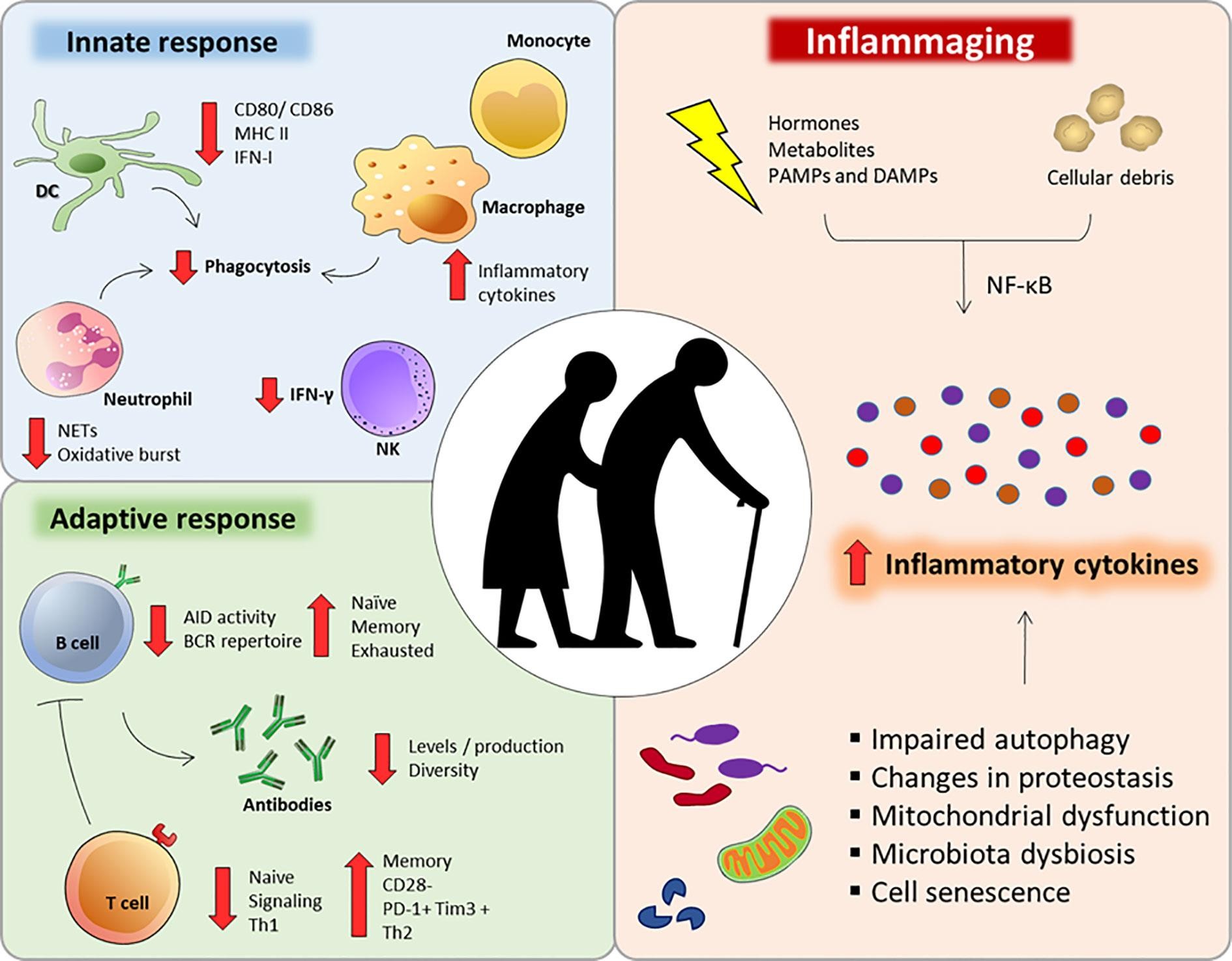
We have known for some time that Ozone has some anti-aging properties. But there are also some other anti-aging aspects of Medical Ozone therapy that are not readily known. The above diagram shows some interesting effects of medical ozone. In this particular case the Ozone was administered intravenously. When Ozone is administered intravenously it will form two different types of compounds. The first compound is hydrogen peroxide (H2O2) which helps launch a cascade of reactions which ultimately reduce inflammation in the body. Less inflammation is less aging. More to come about this. In the above diagram we see that the Ozone is reacting with the Poly Unsaturated Fatty Acids (PUFAs) found in the cell membrane. Poly unsaturated fatty acids all have at least one double bond linkage between carbon atoms. These double bonds cause them to bend, kind of like how your arm bends at your elbow. This double bond limits the number of hydrogen atoms that can bind to the carbon atoms, so the molecule is not as saturated with hydrogen atoms as it could be. Thus, it’s considered “unsaturated.” Unsaturated fatty acids that have one double bond are called monounsaturated fatty acids (MUFAs). Unsaturated fatty acids with more than one double bond are called polyunsaturated fatty acids (PUFAs). Get it? “mono” for one and “poly” for many
Polyunsaturated fats can be divided into 2 groups: omega-3s and omega-6 fats. Two polyunsaturated fatty acids are regarded as ‘essential’ because the body can’t make them – they must come from food. The two essential fatty acids are alpha linolenic acid (an omega 3 fat) and linoleic acid (an omega 6 fat). Omega 3 fats, especially those found in seafood, are vital to help control inflammatory reactions in the body.
POLYUNSATURATED FATS ARE USED AS BUILDING BLOCKS IN THE MEMBRANES THAT SURROUND ALL THE CELLS OF YOUR BODY AND CONTRIBUTE TO THE STRUCTURE OF THE BRAIN. The cell membrane seems to be the major area of reaction between the Ozone and PUFAs.
In the first diagram we see that the Ozone reacts with the Poly Unsaturated Fatty Acids located in the cell membrane. It forms a compound called a Lipid Oxidation Products also known as LOPs. These LOPs react with a variety of cells within the body. In the diagram I have circled in red two important pathways in the body. These two are the AMPK and mTOR pathways. The effects of these pathways have profound implications on our longevity. Other important pathways include: 1. Sirtuin Pathway 2. Nuclear factor-kappa B (NF-kB) pathway 3. NRF2 pathway 4. FOXO pathway. These are very important pathways especially when it comes to anti-aging and longevity.
Let us take a better look at the AMPK and the mTOR pathways. The following illustration shows what happens when there is an AMPK deficit.
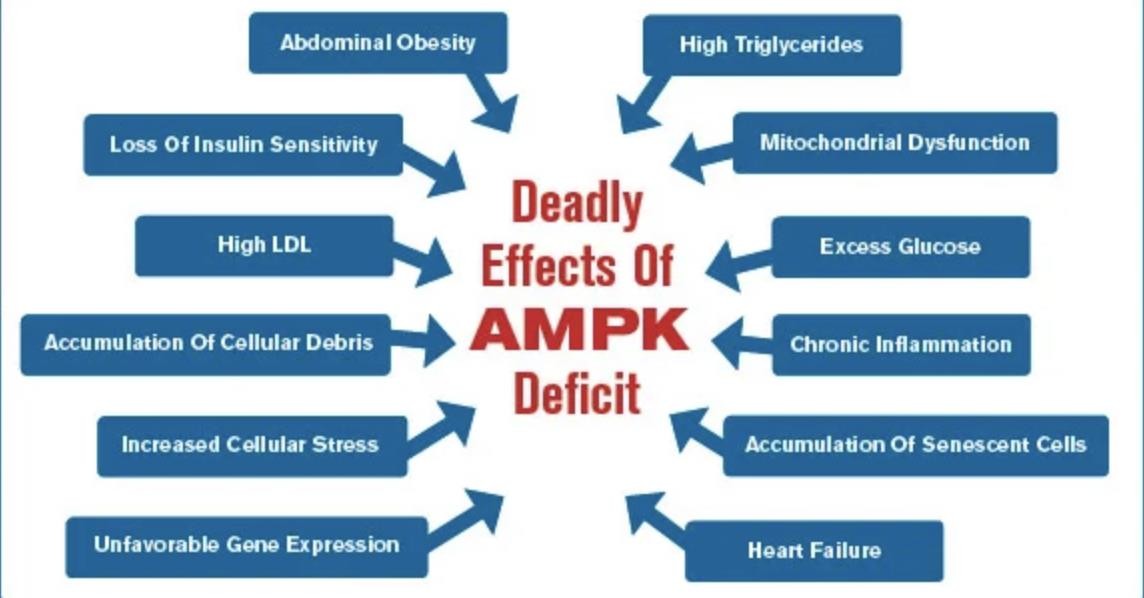
We are able to see that AMPK deficits lead to many conditions associated with increased aging. While the opposite is true. Stimulate the AMPK pathway and you will increase longevity.
The next illustration shows the rewards of increased AMPK.
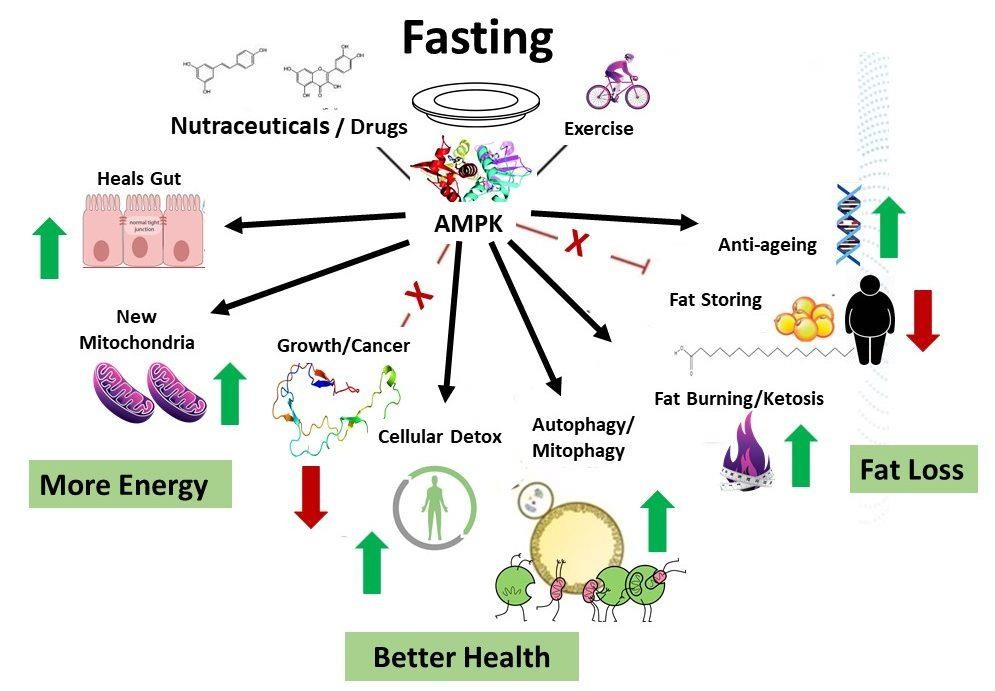
The metabolic protein AMPK has been described as a kind of magic bullet for health. Studies in animal models have shown that compounds that activate the AMPK protein have health-promoting effects to reverse diabetes, improve cardiovascular health, treat mitochondrial disease and even extend life span. AMP-activated protein kinase, or AMPK, is known as a master regulator of metabolism. AMPK deals how our body uses and transforms energy. AMPK is the “switch” that is the link between metabolic disease, inflammation, and longevity. This “switch” tells our cells when to store and generate energy-containing molecules such as fat, and when to “hunker down” and use existing energy store. REMEMBER AMPK ACTIVATION WILL LOWER BLOOD GLUCOSE LEVELS. THIS IS WHY WHEN SOME PATIENTS RECEIVE AN EBO2 OZONE TREATMENT OR OTHER IV OZONE TREATMENTS, THEY SOMETIMES BECOME LIGHT HEADED. THEY ACTUALLY HAVE DROPPED THEIR BLOOD GLUCOSE WHICH CAN EASILY BE REMEDIED BY GIVING THE PATIENT A SOURCE OF GLUCOSE. THE AMPK PATHWAY HAS DRIVEN THE GLUCOSE INTO THE CELLS.
Thus, in order to further enhance the effects of the Ozone it is suggested that that the patients follow through with supplements which further stimulate the AMPK pathway. These supplements include Resveratrol, Alpha Lipoic Acid, Gynostemma (a form of Ginseng), Curcumin, Quercetin, and last but not least is Berberine. These continue to stimulate the AMPK pathway. The bottom line is the stimulating the AMPK pathway will allow our bodies to utilize insulin much more efficiently which is a major hallmark of anti-aging and longevity.
Another important anti-aging pathway is the mTOR pathway. Actually, the blocking of this pathway is the mechanism which results in anti-aging. mTOR means Mechanistic Target of Rapamycin. To slow down aging we want to block most actions of the mTOR pathway. A medication called Rapamycin will block the action of the mTOR pathway. Interestingly, Rapamycin can function as an immuno-suppressant. It is used to prevent organ transplant rejections among other things. When the mTOR pathway is over-activated by nutrients and insulin, it will act to inhibit insulin signaling, thereby causing insulin resistance. Insulin resistance is a hallmark of type II diabetes. Higher insulin levels are associated with increased aging and increased blood glucose. Acute treatment with Rapamycin abrogates insulin resistance in cells and animals including humans. One study showed that chronic treatment with Rapamycin prevented insulin resistance.
There are currently a number of studies that are utilizing Rapamycin which blocks the mTOR pathway. The mTOR pathway is a master regulator of cell growth. Think of increased mTOR activity being an analog of the phrase “LIVE FAST, DIE YOUNG”, because too much activity is good for growth but bad for lifespan. However, too little mTOR activity is not beneficial either because it can disrupt healing and insulin sensitivity. Ozone has an effect on the mTOR pathway mainly by its influence on the AMPK pathway. AMPK hold the mTOR pathway in check. The following illustration shows what the mTOR pathway actually influences. Namely, the
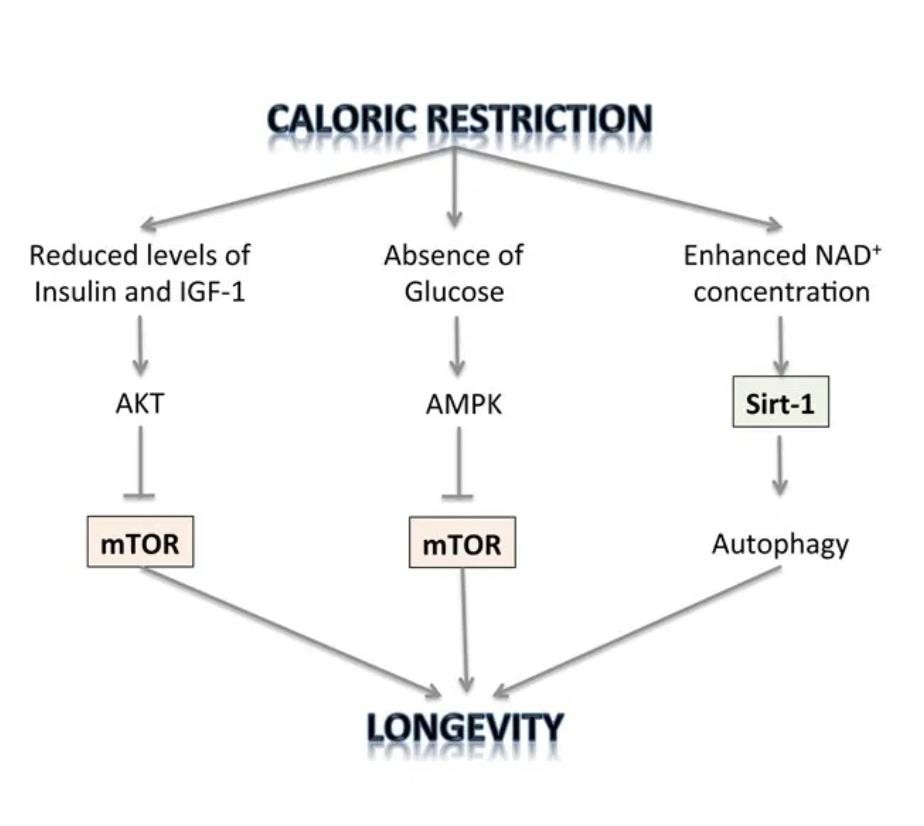
growth of the cells. mTOR is involved in every aspect of cellular life and existence. In the case of inhibition of mTOR, we are actually trying to apply the brakes to cell growth and proliferation. In addition, the mTOR pathway is a direct target of the IGF-1 signaling pathway, which is a major driver of aging. Rapamycin is now available as a treatment modality for anti-aging. Some supplements which simulate the effects of Rapamycin include Curcumin, Green Tea Extract, Resveratrol and Pterostilbene, and Fistin. The next illustration is an example of the mTOR pathway in action. What we see is that the mTOR pathway is great for cell growth but ultimately
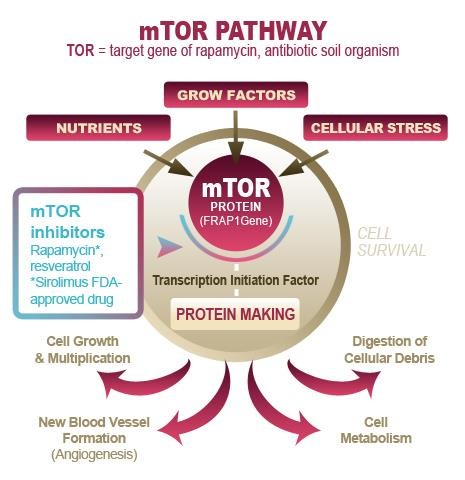
it leads to shorter life span, remember, “LIVE FAST AND DIE YOUNG”. We can see that blocking the mTOR pathway has very beneficial results. It brings on longevity.
Both the AMPK pathway and the inhibition of the mTOR pathway leads to the process of autophagy. Autophagy seems to be a crucial component of many longevity protocols. What is autophagy? Once humans abandoned their hunter ancestors’ roaming lifestyle and settled down in permanent dwellings, they realized the importance and significance of housekeeping. Ironically, our cells long preceded us to this realization as they developed their own miniature housekeeping mechanism, known as autophagy (Greek for ‘self-eating’). Autophagy does not only serve as a detoxification tool but also supports cellular fitness by directing the resulting products from waste hydrolysis towards energy production and cellular recycling. Mounting evidence indicates that autophagy plays a key role in aging and aging-related diseases. Enhanced autophagy can delay aging and prolong life span. The absence of autophagy leads to the accumulation of mutant and misfolded proteins in the cell, which is the basis for the emergence and development of neurodegenerative diseases and other aging-related diseases. The following illustration explains autophagy.
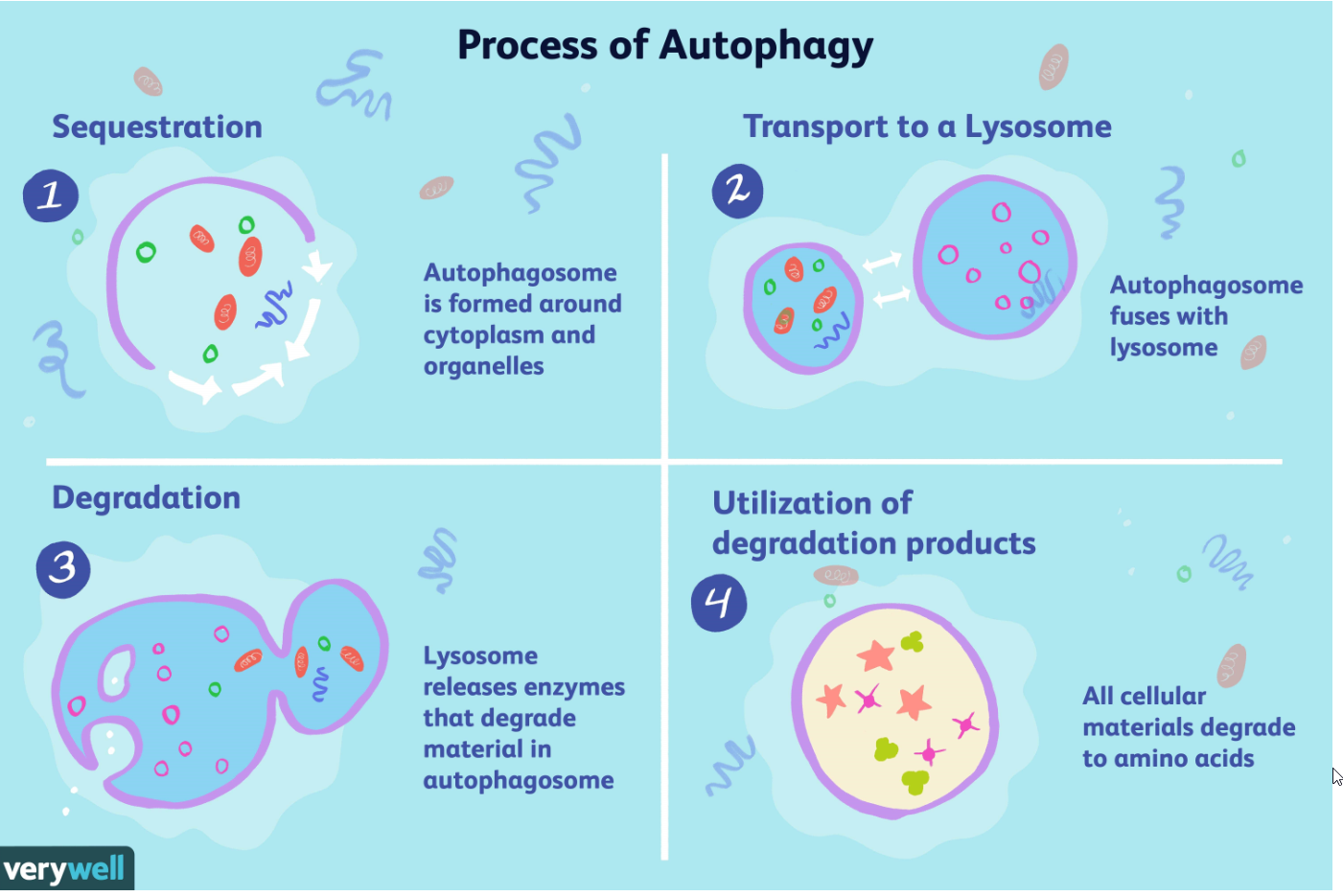
The autophagic activity has been found to decrease with age, likely contributing to the accumulation of damaged macromolecules and organelles during aging. Autophagy is becoming more and more important in the field of anti-aging medicine.
Another aspect of Ozone Anti-Aging is the effect that Ozone has on the NQO1 pathway. NQO1 pathway is very important in the ratio of NAD+/NADH. Ideally, we like this ratio to be about 700/1. NQO1 keeps down the levels of NADH which is thought to be a marker of aging. Also important about the NQO1 pathway is the influences it holds on P-53 stimulation.
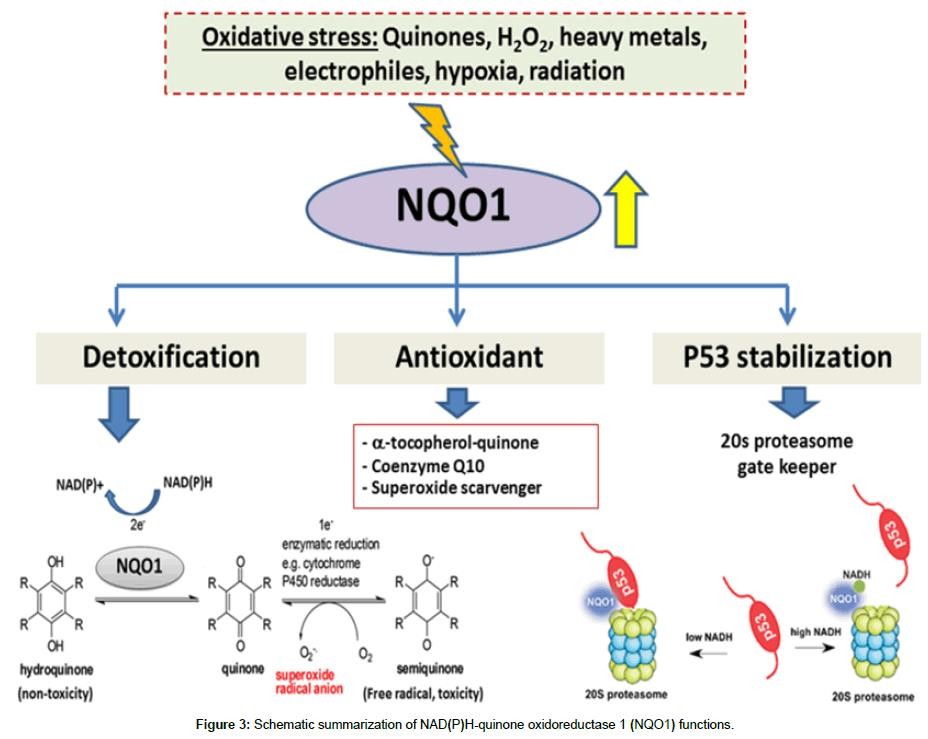
P-53 is called the Tumor Suppressor Gene. It is very important in dealing with cells that have significant DNA damage. It will analyze a cell and either “fix it or kill it”. This is extremely important for anti-aging. If the damaged cells are allowed to accumulate they lead to Senescent cells. A Senescent cell is much like a Zombie cell. It is the “living dead”. It can cause havoc on our immune system which leads to aging. The next illustration is a good example just how the P-53 gene works. It will analyze the cells and determine their fate. They either survive or perish.
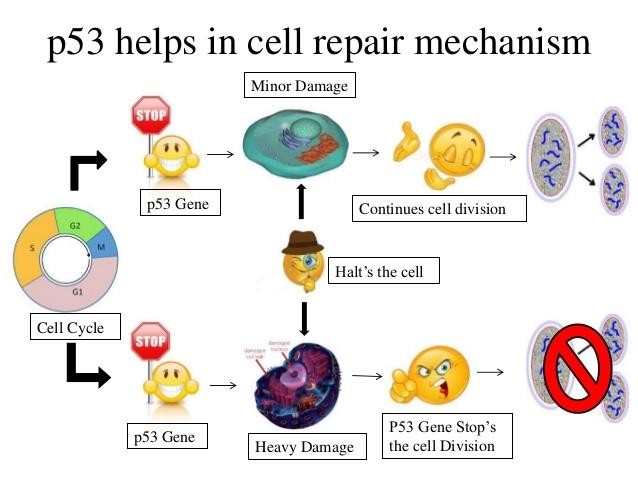
There are also some more well-known aspects of aging that are associated with Ozone. One aspect includes the anti-aging aspect that Ozone has upon the Sirtuin pathways via the influence of NAD+ production. Ozone helps produce NAD+ which has significant implications on the function of the Sirtuin proteins. The Sirtuins are very important for mitochondrial health. The Sirtuins seem to have an influence on a number of other aging pathways. For instance, we see here the influences that Sirtuin One protein has on a number of processes concerned with aging.
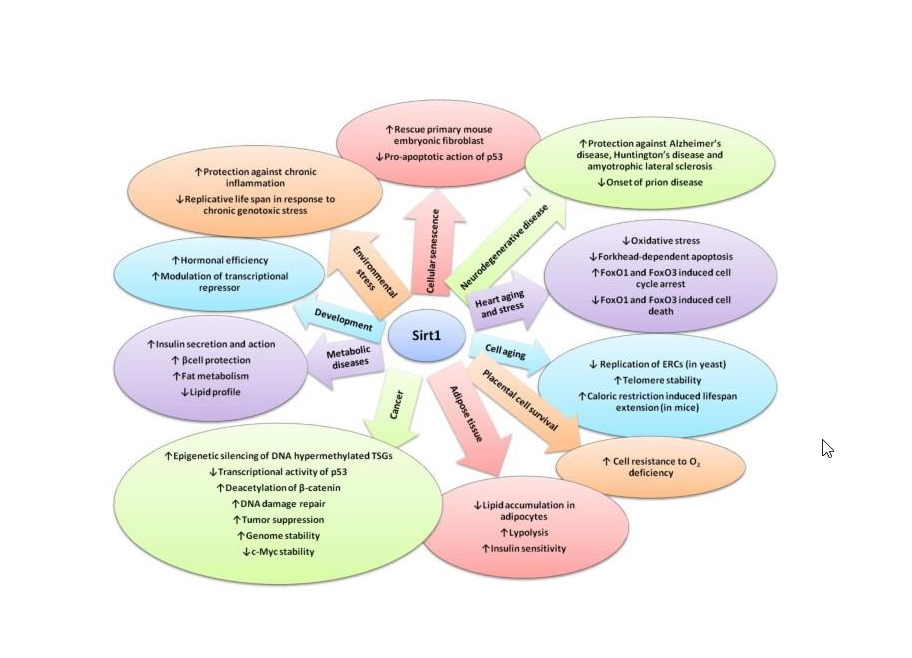
Lastly and just as important, the effects that Ozone on the NRF2 pathway are very influential in increasing our longevity. We must remember that NRF2 pathway is a thermostat of anti-inflammation. This dovetails very nicely with a process the name of which was just coined a few years ago, namely “Inflammaging”.
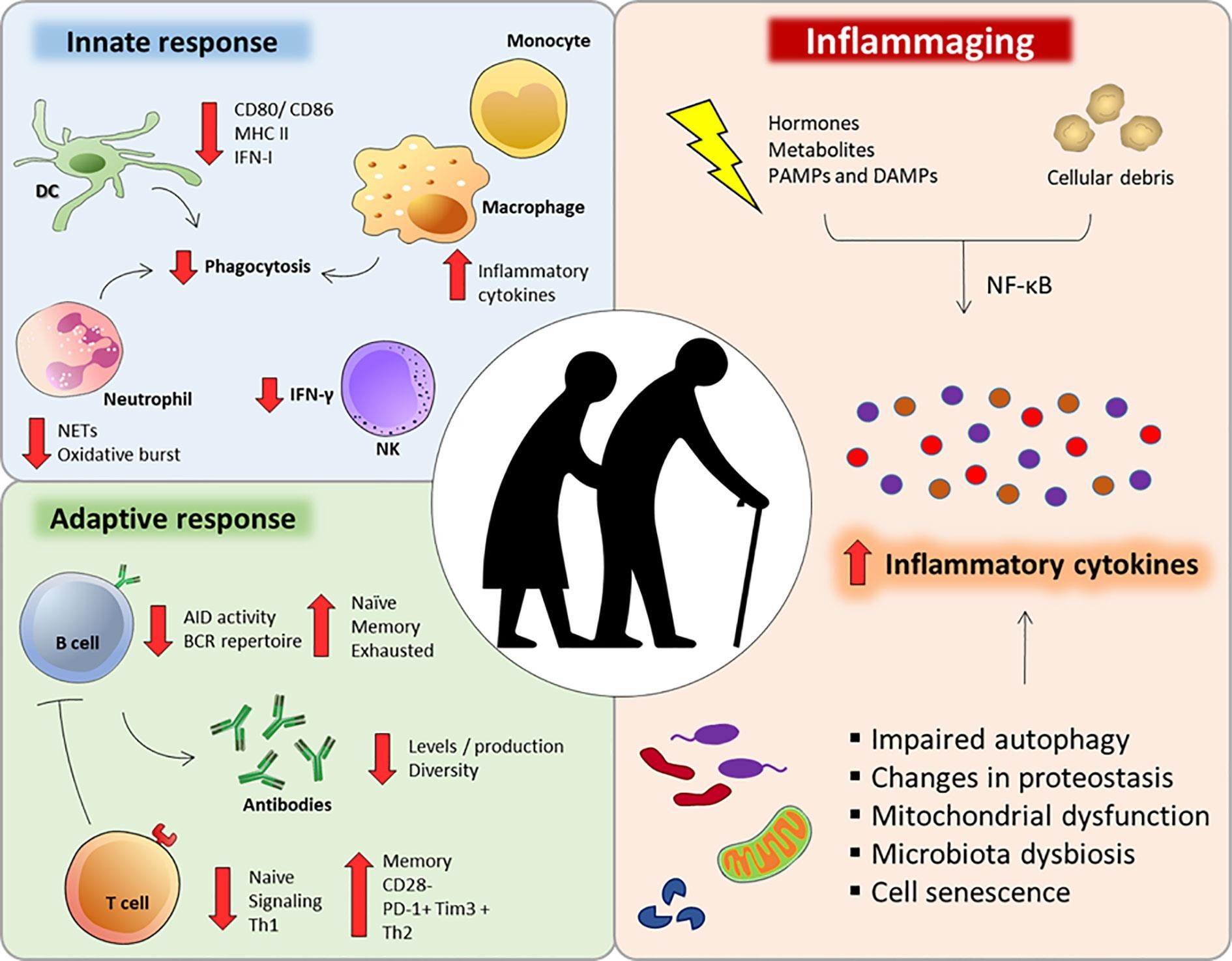
“Inflammaging” essentially means that inflammation leads to aging. This last illustration seems to sum up everything. Ozone has effects on all these aspects of aging. Dr. Purita
